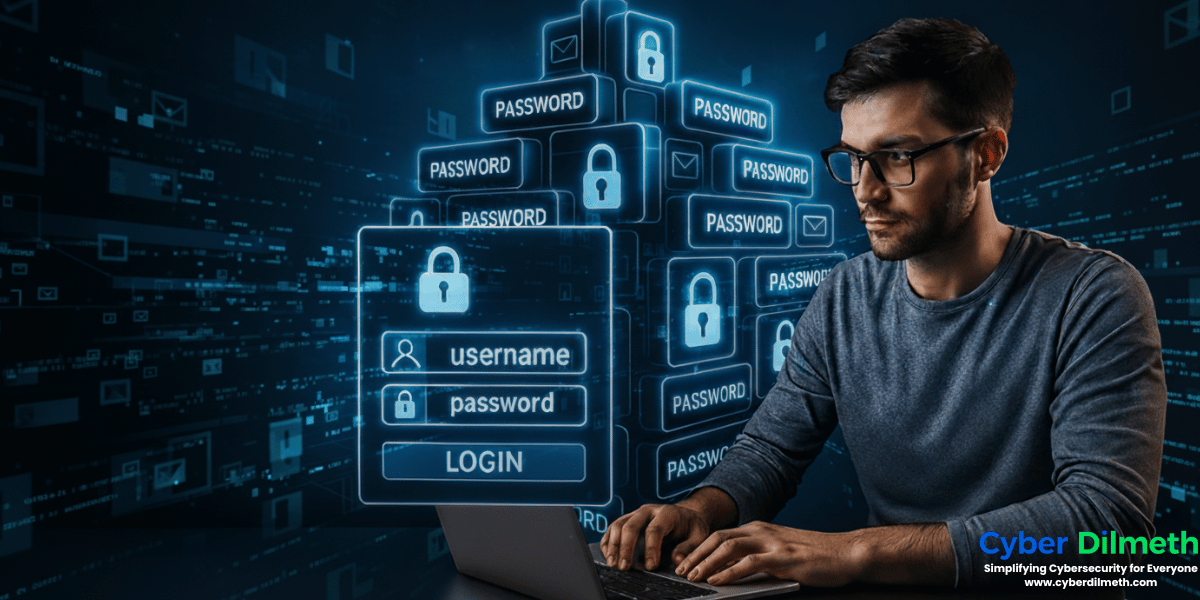When it comes to safeguarding your digital presence, you might immediately think of firewalls, antivirus software, or IT teams working behind the scenes. But in reality, the first line of defense is far simpler: your password.
It may not sound thrilling, but your password is the gatekeeper to nearly everything you do online. From your email and bank account to your shopping history and social media profiles, it all starts with that secret word or phrase. And if that gatekeeper is weak or reused, you’re essentially handing over the keys to cyber criminals without even realizing it.
Why Weak Passwords Are a Risk
Think of your password like the key to your house, office, and car. If you lose it, everything’s exposed. That’s what happens when you use the same password across multiple accounts.
The risks are real:
- Data Breaches – If one website gets hacked, attackers will try your password on your email, bank, and social media accounts.
- Identity Theft – Criminals can impersonate you, steal money, or open new accounts in your name if they get your login details.
- Unauthorized Access – A hacked password can lock you out while someone else takes control of your accounts.
In today’s world, attackers don’t need to “guess” your password. They use automated tools that can quickly test millions of weak passwords in seconds.
What Makes a Strong Password?
Here’s the good news: protecting yourself doesn’t require a degree in cybersecurity. A strong password simply needs to be:
✅ Long – Aim for at least 12-16 characters.
✅ Complex – Mix letters, numbers, and symbols. For example, “MyP@ssw0rd#45!” is much stronger than “MyPassword45.”
✅ Unique – Never use the same password for more than one account.
✅ Unpredictable – Avoid obvious words like names, birthdays, or simple patterns.
For a stronger option, try using a passphrase instead of something like “John123”. Consider something like “H3ll0!IsItM3You’reL00king4?” — hard to crack and still easy to remember.
Tools That Make It Easy
Let’s face it, remembering multiple strong, unique passwords is tough. Fortunately, there are tools to help:
- Password Managers – These secure vaults store all your passwords. You only need to remember one master password, and the manager generates and stores unique passwords for each of your accounts.
- Two-Factor Authentication (2FA) – This adds a second layer of protection. Even if someone guesses your password, they can’t access your account without the second factor, like a code sent to your phone.
Quick Safety Checklist
Here’s a simple checklist to boost your password security:
✅ Replace reused passwords with unique ones.
✅ Strengthen weak passwords to at least 12-16 characters.
✅ Use a password manager to generate and store secure passwords.
✅ Turn on two-factor authentication wherever possible.
✅ Review and update old passwords regularly.
These small steps can provide a much stronger defense against cyber threats.
Make it a Habit
Password security isn’t a one-time fix. It’s something you need to keep up with — just like locking your door or putting on your seatbelt.
Start by updating your passwords for the most important accounts (like email, banking, and social media).
Enable 2FA on all accounts that support it.
Use a password manager to keep everything organized.
These simple habits will build a powerful defense over time.
Your First Step in Cyber Safety
Cybersecurity doesn’t always involve complex software or technical know-how. Sometimes, it’s about taking the simplest actions. Using strong, unique passwords is one of the most effective and easiest ways to protect your digital life.
At Cyber Dilmeth, we believe online safety starts with everyday habits anyone can adopt. Make today the day you strengthen your passwords. It’s the first, and one of the most important, steps in your cyber safety journey.


